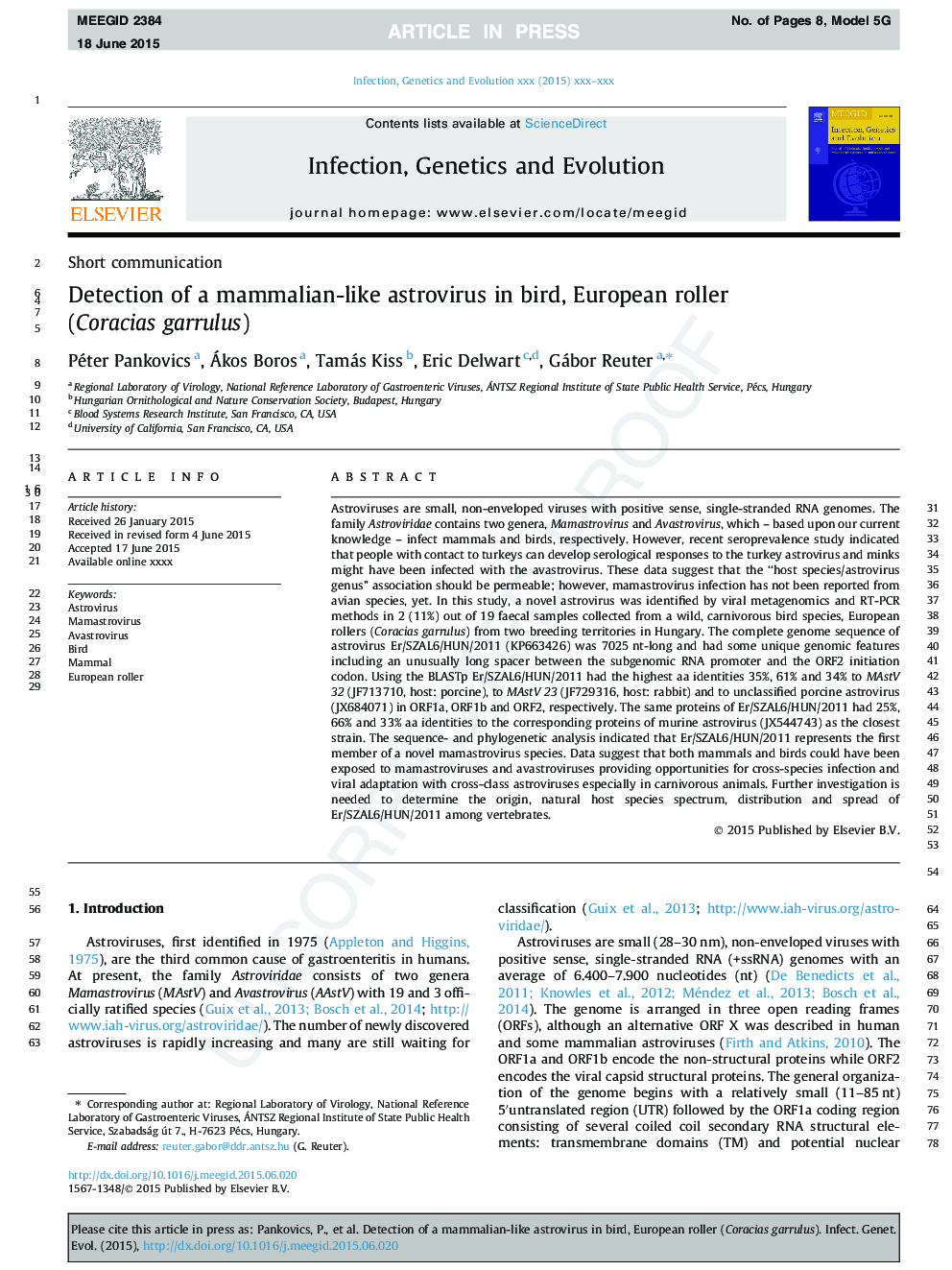| کد مقاله | کد نشریه | سال انتشار | مقاله انگلیسی | نسخه تمام متن |
|---|---|---|---|---|
| 5909047 | 1570169 | 2015 | 8 صفحه PDF | دانلود رایگان |
عنوان انگلیسی مقاله ISI
Detection of a mammalian-like astrovirus in bird, European roller (Coracias garrulus)
دانلود مقاله + سفارش ترجمه
دانلود مقاله ISI انگلیسی
رایگان برای ایرانیان
موضوعات مرتبط
علوم زیستی و بیوفناوری
علوم کشاورزی و بیولوژیک
بوم شناسی، تکامل، رفتار و سامانه شناسی
پیش نمایش صفحه اول مقاله

چکیده انگلیسی
Astroviruses are small, non-enveloped viruses with positive sense, single-stranded RNA genomes. The family Astroviridae contains two genera, Mamastrovirus and Avastrovirus, which - based upon our current knowledge - infect mammals and birds, respectively. However, recent seroprevalence study indicated that people with contact to turkeys can develop serological responses to the turkey astrovirus and minks might have been infected with the avastrovirus. These data suggest that the “host species/astrovirus genus” association should be permeable; however, mamastrovirus infection has not been reported from avian species, yet. In this study, a novel astrovirus was identified by viral metagenomics and RT-PCR methods in 2 (11%) out of 19 faecal samples collected from a wild, carnivorous bird species, European rollers (Coracias garrulus) from two breeding territories in Hungary. The complete genome sequence of astrovirus Er/SZAL6/HUN/2011 (KP663426) was 7025Â nt-long and had some unique genomic features including an unusually long spacer between the subgenomic RNA promoter and the ORF2 initiation codon. Using the BLASTp Er/SZAL6/HUN/2011 had the highest aa identities 35%, 61% and 34% to MAstV 32 (JF713710, host: porcine), to MAstV 23 (JF729316, host: rabbit) and to unclassified porcine astrovirus (JX684071) in ORF1a, ORF1b and ORF2, respectively. The same proteins of Er/SZAL6/HUN/2011 had 25%, 66% and 33% aa identities to the corresponding proteins of murine astrovirus (JX544743) as the closest strain. The sequence- and phylogenetic analysis indicated that Er/SZAL6/HUN/2011 represents the first member of a novel mamastrovirus species. Data suggest that both mammals and birds could have been exposed to mamastroviruses and avastroviruses providing opportunities for cross-species infection and viral adaptation with cross-class astroviruses especially in carnivorous animals. Further investigation is needed to determine the origin, natural host species spectrum, distribution and spread of Er/SZAL6/HUN/2011 among vertebrates.
ناشر
Database: Elsevier - ScienceDirect (ساینس دایرکت)
Journal: Infection, Genetics and Evolution - Volume 34, August 2015, Pages 114-121
Journal: Infection, Genetics and Evolution - Volume 34, August 2015, Pages 114-121
نویسندگان
Péter Pankovics, Ákos Boros, Tamás Kiss, Eric Delwart, Gábor Reuter,